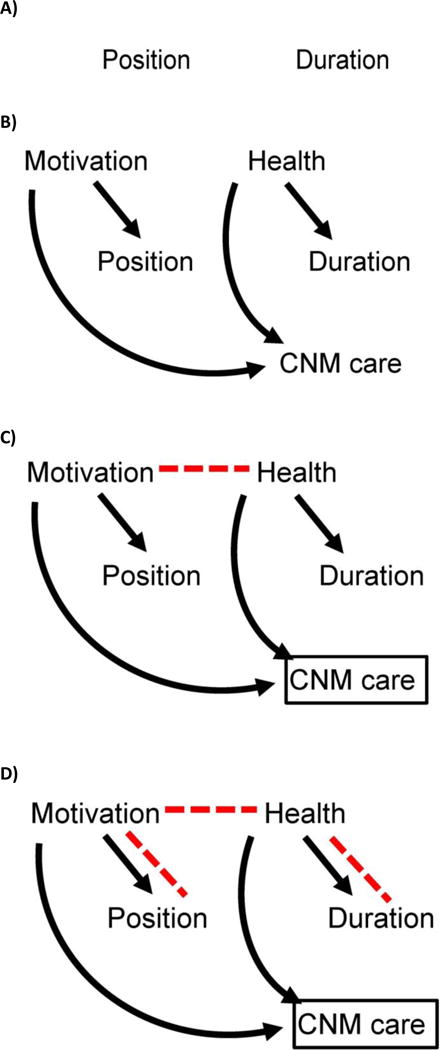Figure 4.

4a: Assume there is no association between the labor position and duration. Lack of causal association between labor position (exposure) and labor duration (outcome) in the second hypothetical study is shown by no arrows or lines connecting them. 4b: Suppose that women who are especially motivated to birth vaginally are also eager to try things during labor that they have heard might help them birth vaginally, such as standing or walking. So, these highly motivated women might be both especially interested in being midwifery patients (and thus potentially in the study) and also especially interested in being upright during labor. Motivation for a vaginal birth predicts labor position and CNM care, and maternal health predicts labor duration and CNM care, but there is still no association between labor position and labor duration. 4c: In parallel, suppose that healthier women have more efficient labors. So, these healthier women might be both especially interested in being midwifery patients (and thus potentially in the study) and also more likely to have rapid labors (assume for simplicity that these are the only associations in our causal system). There may be no association between the exposure (maternal position in labor) and outcome (length of time in active labor) in our population, but when we restrict analysis to women receiving midwifery care, we distort the association between motivation and health status, which in turn opens a new backdoor path between exposure and outcome. In a study restricting to CNM patients (represented by the box around CNM care), motivation and health will be associated (red dashed arrow), because CNM care is a collider. 4d: The new pathway between motivation and health in the sample of CNM patients (not present in the overall population) creates a new, biasing pathway between maternal position and duration of labor (red dashed lines): this is selection bias.
